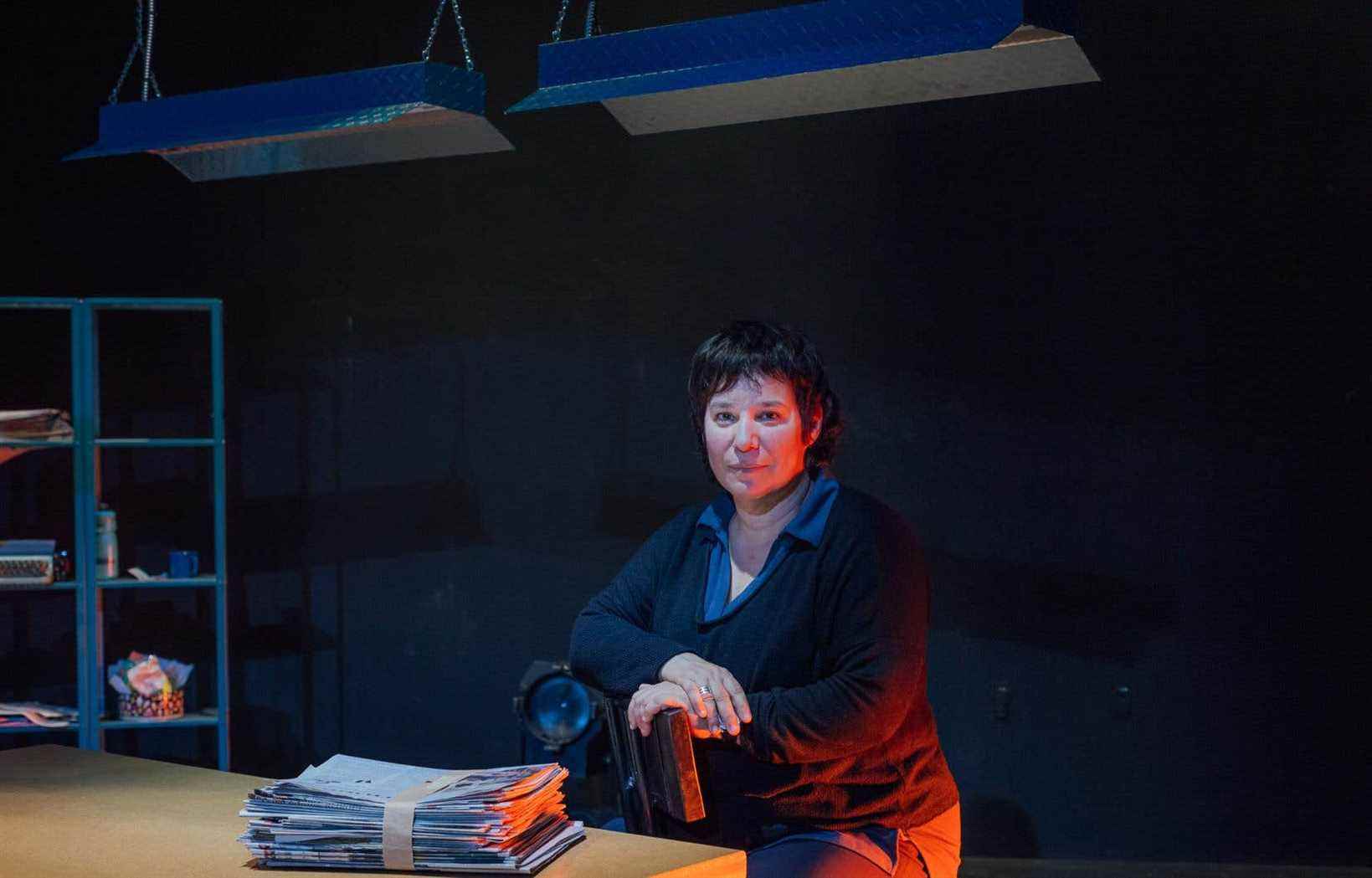Isabelle Leblanc has not heard her words ring out in a theater for almost twenty years. After Dawn (2001) and The story by Raoul (2003), the author and director is preparing these days to unveil Rita in the desert on the Quat’Sous plateau. “It is certainly the most intimate of all the texts I have written so far,” she admits. It is about the pact of writing, the mystery of creation, this bridge between the real and the imaginary, but I also see a kind of pact with myself, a form of commitment on my part. towards writing. “
After participating in the Destination World Course in 1993, then actively collaborating with Wajdi Mouawad for two decades, in particular for Littoral and Fires, Isabelle Leblanc, responding to the desire for a change of scenery, undertook a master’s degree in literary studies at UQAM in 2012… to come out in 2018, a short novel under her arm. This is where Luce Pelletier, director of the Théâtre de l’Opsis, with whom Isabelle Leblanc teaches at the Cégep de Saint-Hyacinthe, comes in: “After reading my text, Luce convinced me to adapt it for the stage. The show, co-produced with La Colline, the theater that Mouawad directs in Paris, is part of the Cycle of feminine territories started by Opsis in 2019.
Aesthetics from the inside out
The adventures of Rita Houle, a fifty-year-old explorer engaged in a car rally taking place in the hostile Gobi desert, a mythical 4×4 race over 25,000 km, are recounted by a biographical narrator, Lucien Champion, a sports journalist who dreams of returning account of great conquests. But we will quickly understand that appearances are deceptive. As Isabelle Leblanc writes in her memoir, we are dealing with a “negative biography”, a “static drama”, the expression of an “aesthetic from the reverse”.
Do the experiences that we do not live take responsibility for building an identity for us just as much as those we have lived? Who are those who live and die in anonymity? Those and those condemned to the mass grave? What makes an individual choose to more or less stand still while awaiting death? Threaded by this kind of big questions, questions reactivated by the horrors of war related to the News or by the still recent death of her mother, the author has in a way tried to answer it by writing Rita in the desert.
On the Quat’Sous website, Isabelle Leblanc superbly explains her intentions: “In this piece, I have a secret desire. That of saving what never existed. Make that live, somewhere, what never happened. We must bear witness to both life and death. As much about what has been, as about what has never seen the light of day. “
Literary sources
If the universe is Kakfa, Musil, Beckett and Walser, especially because of his black humor and his absurd relationship to work, Isabelle Leblanc recognizes that her play was greatly nourished by the figure of Bartleby, the character from Melville’s 1856 short story: “The fate of Bartleby, that of a dysfunctional man who inexplicably stands all day staring out the window until he is thrown into a ‘prison-asylum’ where it ends up dying, it’s a bit like my Rita’s. Like him, she is, so to speak, suspended, absorbed by something indefinable, until the inevitable engulfment. “
While Lucien strives energetically from the press room of his newspaper, a “weekly without scope”, to lead Rita, his “Balzacian heroine”, in a thousand and one adventures in the heart of the largest desert in the world, the wife of 52 years old refuses to comply. “It jeopardizes his ideas of greatness,” explains Leblanc, “it slows down his ambitions, short-circuits his pride, but could well at the same time contribute to making him a true writer. “
There is indeed a moment when the biographer leaves room for the author, imagining adventures, creating places and situations in complete sovereignty, by the sole power of the word, by the simple arrangement of words. “I claim the right of possible worlds against the existing world, to save what has never existed, then proffered Lucien. It will be the story of the life you didn’t have Rita. I will write what never happened, what never happened. I’ll write the greatest epics you’ll ever experience. I will not write what happened. But what is possible. “
An ode to creation
For Isabelle Leblanc, there is no doubt that the play is a test of reality: “Lucien explores the most improbable probabilities, he relies on the infinite potential of the imaginary. His commitment, his way of devoting himself body and soul to thought and writing, of going through adversity, of surpassing himself in a way, all of this is phenomenal. The piece is an ode to creation, no more and no less. There is suffering, of course, but also hope, and a good dose of humor. “
Isabelle Leblanc had wanted to work with Roger La Rue, who embodies the verbomotor Lucien Champion, for more than a decade. “He’s an actor who makes me laugh a lot,” she explains, “but who also carries a sadness, a seriousness that moves me deeply. This delicate blend suits Lucien’s character perfectly. The meeting with Alexandrine Agostini, who camps Rita without saying a word, but with a very strong physical presence, exceeds all my expectations. “
